Dad of 5. CEO & Co-Founder of Avocado Health. Former HealthTech & FinTech Founder. Passionate about empowering families and driving change in parenting and child development.
A wake window is the period your baby comfortably stays awake between naps. Knowing your baby’s wake window helps optimize their sleep routine, making naps and nighttime sleep smoother. We’ll break down how wake windows change as your baby grows, how to spot sleep signals, and how to adjust them for a calmer, more predictable schedule.
Table of Contents
What are Wake Windows and What Counts (and What Doesn’t)?

Wake windows refer to the duration a baby remains comfortably awake between their nap times.
Is feeding included in the wake window?
Yes, feeding is part of the wake window, whether it’s breastfeeding or bottle feeding. It counts as time your baby is awake and engaged, so it should be factored into the overall duration of their wake period.
What Can Wake Windows Do for Your Baby’s Sleep?
These spans are essential for gauging how many naps your infant should have in a day and are key to shaping both their sleep quality and daily rhythm. Think of typical wake windows as benchmarks for syncing with your little one’s biological clock, helping them fall asleep more smoothly and stay asleep for longer stretches.
Do Pre-Sleep Moments Count in Wake Windows?
No, pre-sleep moments don’t count as part of your baby’s wake window. While babies usually take 5-20 minutes to fall asleep, that time is considered rest rather than active awake time—especially if they’re in a calm, quiet environment. So, the moments right before they drift off or when they’re waking up are just their brain’s way of winding down, not part of their active wake time.
How do you know when your baby is ready for longer wake windows?
The appropriate length of time babies stay alert grows as they mature, so while newborns typically experience brief wake intervals, older infants can sustain being awake longer due to advancements in growth and an evolving internal timekeeper. By fine-tuning these age-appropriate wake windows, you’ll be contributing positively to your child’s mental acuity and emotional health.
Determining accurate wake windows necessitates close observation of individual signs that vary from baby to baby. Since every infant is distinct with differing needs regarding when it’s time for rest or bedtime, monitoring these cycles will aid in identifying those critical moments conducive to slumber. This vigilance paves the way toward achieving stable routines linked to effective sleeping patterns for your child.
Wake Windows by Age
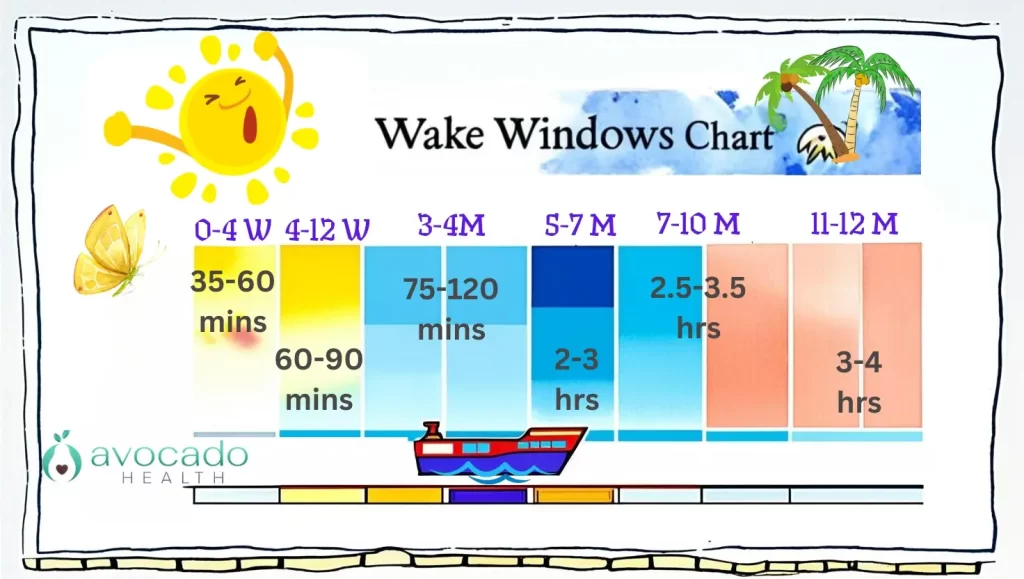
Understanding age-related differences in wake windows is essential for catering to your baby’s sleep requirements. Newborns, during their initial months, typically experience very brief periods of staying awake – usually between 30 and 70 minutes. As babies grow older, these periods gradually become longer.
When infants are between 3-6 months old, their capacity to remain awake extends approximately from an hour and a half up to two and a half hours. When they advance in age to reach the span of 7-12 months, they can handle being awake for periods stretching from two and a half up to four hours at a time before needing another nap. Adapting as these durations increase is crucial for devising an effective sleep schedule that both fosters your baby’s growth and guarantees adequate restorative sleep.
Newborns (0-2 months)wake windows
Newborn babies have unique sleep needs, characterized by their short but recurring wake windows, which last from 30 minutes to an hour and a half. Newborns typically need three to five naps a day, and these limited wake periods are essential for their swift growth and development, as they dedicate much of their time to sleeping.
Starting a consistent routine early is like laying down the tracks for smooth sleep ahead. It sets the stage for healthier sleep habits that will grow with your baby, making the journey to better sleep a whole lot smoother.
Infants (3-6 months)
When your baby reaches the age of 3 to 6 months, you’ll start observing substantial alterations in how they sleep. Infants within this stage often remain awake for periods ranging from one and a half hours to two and a half hours. These wake windows grant additional opportunities for play and interaction that are crucial to their growth.
During your baby’s wakeful moments, it’s crucial to keep them engaged with activities that spark their senses and encourage movement. Watch closely for those sleepy cues—when you catch them early, it’s easier for your little one to settle down when nap time rolls around. Miss those signals, and it can make it trickier for them to wind down and get the rest they need!
Older Babies (7-12 months)
Babies between the ages of 7 to 12 months experience wake windows lasting from two and a half to four hours. The lengthening period they spend awake is essential for their development, both physically and mentally, as it gives them ample opportunity for active play and exploration. As your baby nears the one-year mark, you might observe that they transition into a routine consisting of two naps each day.
To effectively handle these prolonged periods when your baby is awake, it’s important to strike a balance between engaging activities and downtime to avoid overexertion which can lead to overtiredness.
Signs Your Baby is Ready for Sleep

Identifying the signs that your baby is ready for sleep is essential to make sure they receive adequate rest, because a well-rested baby means a happier, calmer day for everyone!
When your baby’s tired, the signs are written all over their face—literally! You might catch them rubbing their eyes, yawning, or getting a little grumpy. Newborns, in particular, might even turn away from you or their toys, signaling that they’ve had enough of the action and are ready to drift off. Keep an eye out for these cues to keep nap time on track!
By tuning in to those sleepy signals, you can start timing naps like a pro and avoid the chaos of an overtired little one. If your baby gets extra cranky or takes forever to fall asleep, try tweaking their wake time little by little. Finding that sweet spot will help them drift off to slumber much easier, turning nap time into a peaceful moment for both of you!
How to Adjust Wake Windows
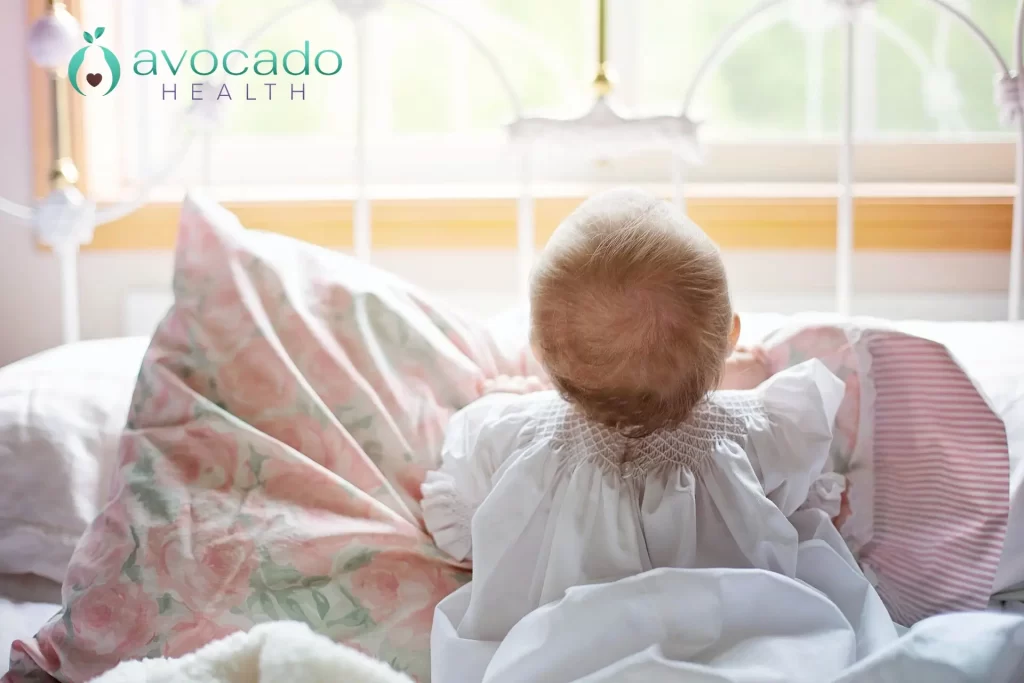
Tweaking wake windows can be somewhat experimental, but it’s a worthwhile endeavor. Should your baby show reluctance to sleep at regular intervals or exhibit vitality toward the end of an established wake window, it may signal that their schedule needs refinement. Similarly, unusual fussiness or extended durations for falling asleep suggest that their wake windows might require alterations.
To gradually stretch out those awake periods, try adding just 10-15 minutes at a time before you go for nap or bedtime. This gentle approach helps avoid overstimulation, keeping your baby happy and rested. Pay close attention to their cues and make adjustments that fit their needs—every baby is unique, so it’s all about finding what works best for yours as they grow!
If wake windows stretch too long, babies can get cranky and struggle to settle into slumber. By tuning into your baby’s signals and adjusting their awake times as needed, you can help create a smoother, more peaceful sleep routine for them.
Activities During Wake Windows
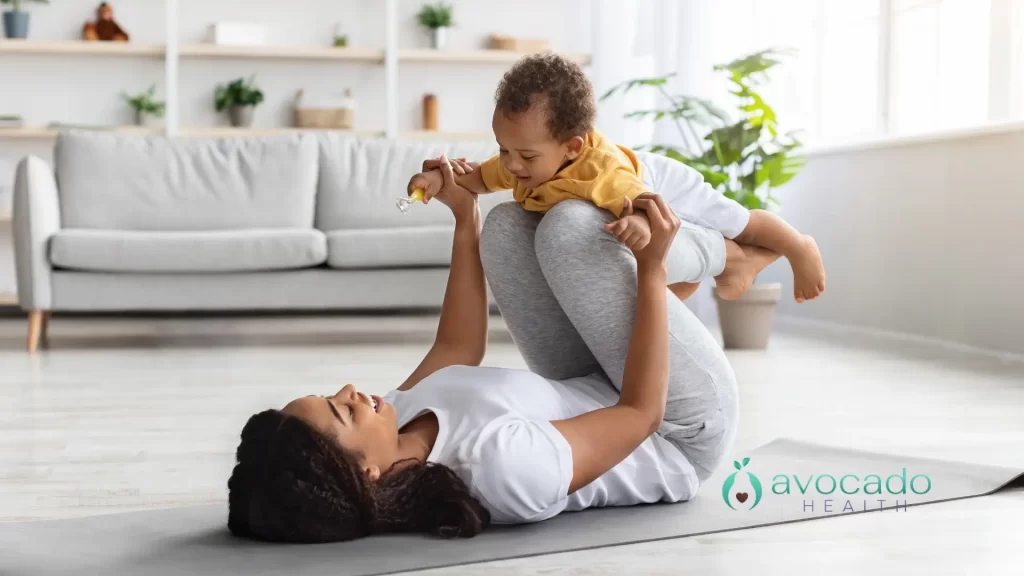
It’s important to involve your baby in activities suitable for their age during the periods they are awake, known as wake windows. These pursuits not only aid in development, but also make it easier for them to settle down and sleep. For infants just starting out, simple practices like tummy time play a significant role, with each minute of activity contributing to their overall growth.
As babies mature, engaging them in more active and interactive endeavors becomes key. The idea is to select stimulating and soothing tasks that gently exhaust your baby sufficiently enough for them to enjoy a peaceful nap. Each developmental phase comes with its own set of unique requirements. Let’s explore some activity examples that cater specifically to various milestones in your baby’s life stages.
For Newborns
Participating in mild exercises facilitates both the physical growth and mental advancement of infants.

Is a straightforward activity, not only fortifies your infant’s neck and shoulder muscles, but also offers sensory stimulation which is pivotal for their development. Engaging babies with various textures, noises, and visuals through sensory play Promotes the maturation of their sensory abilities.
- Face-to-face time
Is all about connecting with your baby through eye contact, smiles, and just being present together. It’s a simple yet powerful way to build that special bond. Around 6 to 8 weeks, your little one may start giving you their own adorable “social smile” in return. It’s the perfect moment to slow down, smile at them, and share those sweet moments together. Taking just a few minutes each day to engage in this fun, interactive time can do wonders for your baby’s development—and create memories you’ll cherish!
Such calming activities can lead newborns to a state of tranquility that primes them for better sleep, thereby improving the quality of their rest. Weaving these exercises into the periods when your baby is awake—known as wake windows—can profoundly influence and refine their sleeping patterns.
- Age-appropriate toys
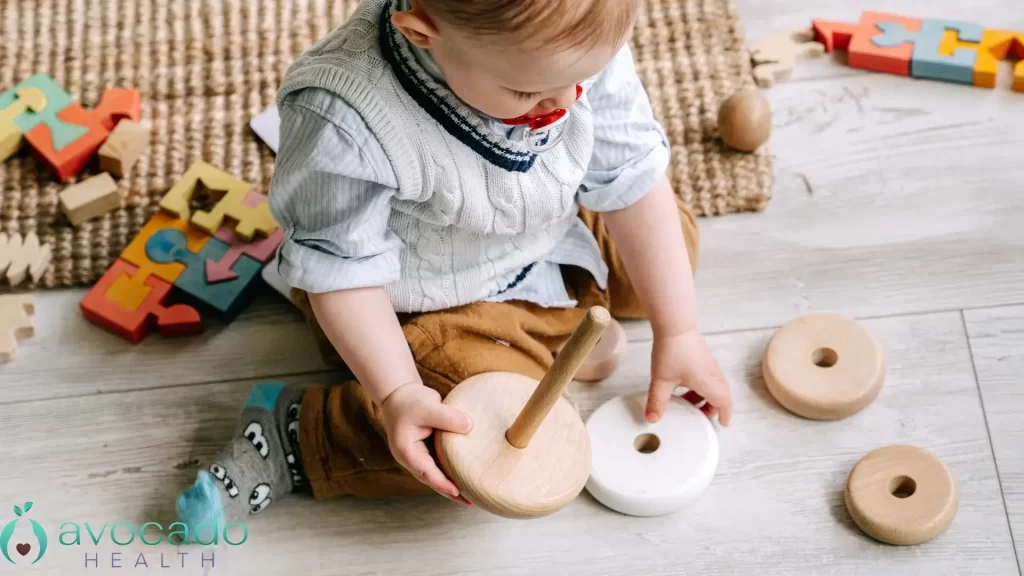
Babies love to explore by touching and grasping things. In their first month, soft toys like stuffed animals, fabric balls, and small rattles are perfect. Since babies don’t fully see colors until about 16 weeks, toys with bold colors and high contrast patterns will capture their attention and help with their early development.
- Singing & Making sounds

Singing to your newborn is more than just fun—it’s a wonderful way to bond and support their development. Whether it’s a lullaby or a simple tune, singing helps build vocabulary, rhythm, and even early speech skills.
For Infants 3-6 months
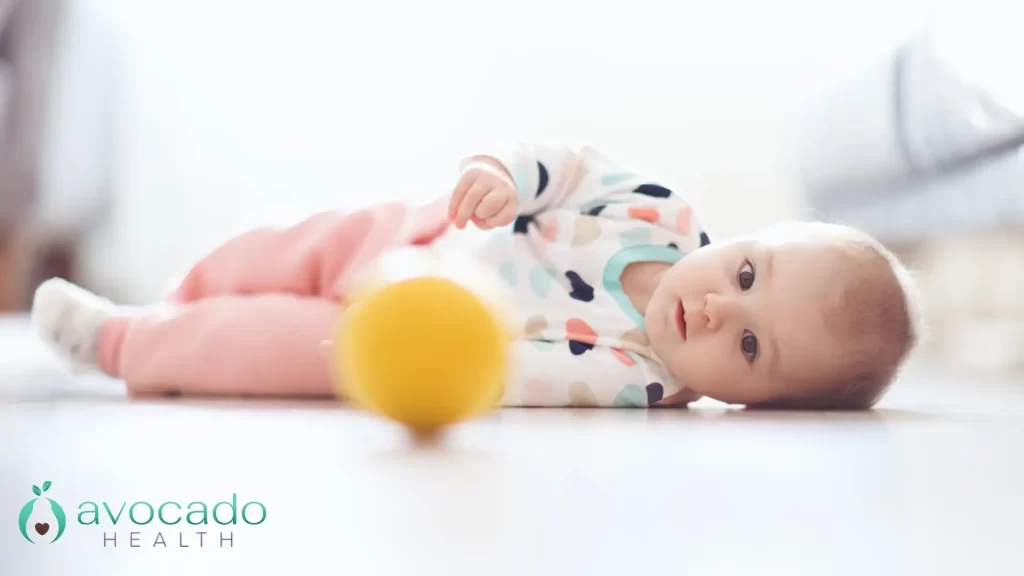
During those precious awake moments between 3 and 6 months, babies thrive on interactive play:
- Exploring vibrant, colorful toys that capture their attention
- Mastering new skills, like rolling over, one little step at a time
- Enjoying fun, bonding games like peekaboo that spark laughter
These activities are not just fun—they’re key to boosting their growth and development! They allow them to explore their surroundings while mastering new abilities, making the most out of each wake window by ensuring it is both beneficial and pleasurable.
For Older Babies 7-12 months
For infants between 7 and 12 months, active play and exploration are game-changers. As they crawl, cruise around, and explore bigger toys, they burn off energy, which helps them wind down for a good nap. At the same time, they’re strengthening their bodies and fueling their natural curiosity, all while having fun and discovering the world around them. Here are some engaging activities that will support your baby’s development during this exciting stage:
Mirror Peekaboo

Get your little one excited about their reflection by playing peekaboo in front of a mirror. Hide and reveal objects while asking, “Where’s the toy?” This activity teaches object permanence and helps them discover the magic of reflection.
Encourage Movement with Toys
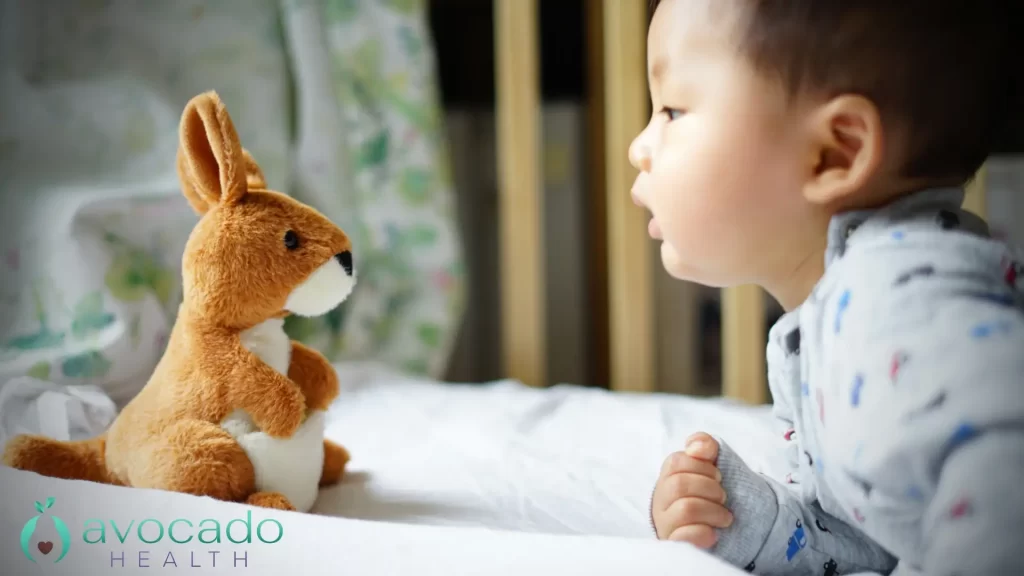
Place a favorite toy just out of reach to motivate your child to stretch, crawl, or even scoot toward it. This simple activity boosts strength, coordination, and helps develop gross motor skills.
Stacking Blocks

Introduce colorful, soft stacking blocks. Watch as your little one explores, stacking and knocking over the blocks, improving fine motor skills and learning about spatial relationships.
Pretend Play with Stuffed Animals
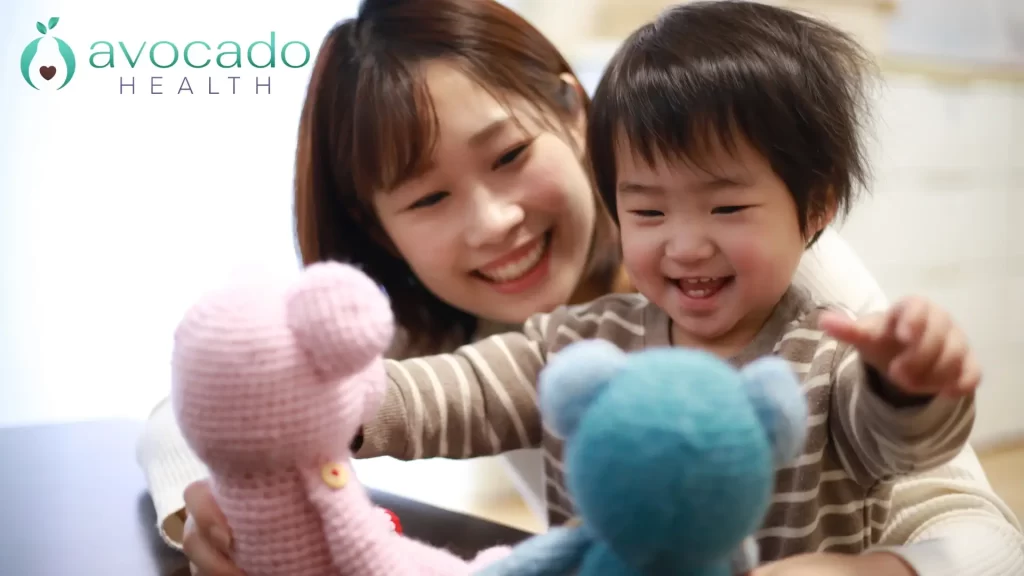
Engage your child with stuffed animals or dolls for simple pretend play. Create little conversations with the toys to spark imagination and social development.
Engaging in dynamic activities helps reduce the chances of your baby becoming overly tired and supports the development of better sleep patterns. By paying attention to signs like increased irritability or a drop in activity, you can pinpoint the ideal time for a nap, allowing your little one to get the rest they need to recharge.
Establishing a Nap Routine
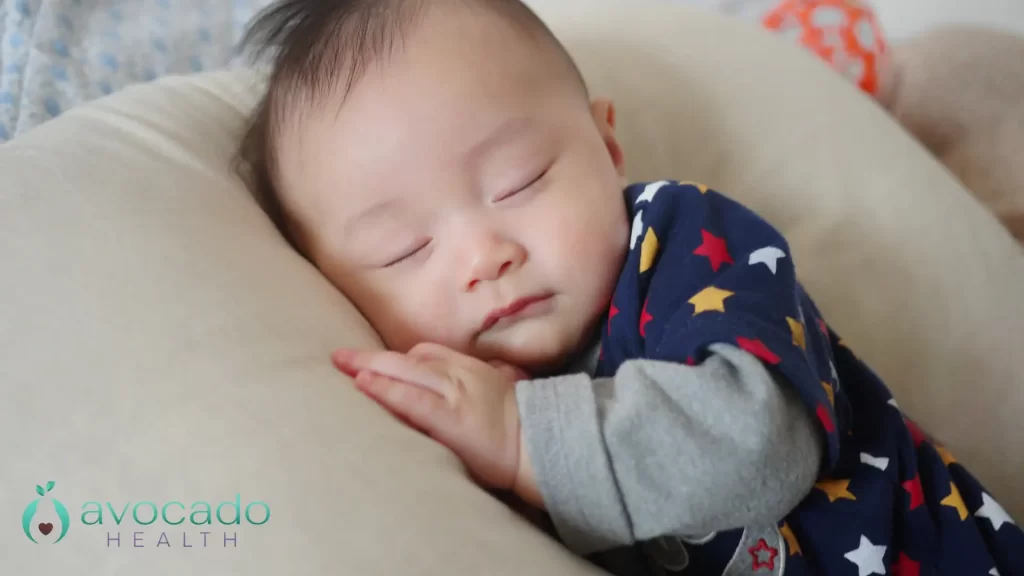
Establishing a regular nap schedule is vital for your baby’s health and sleep improvement. Setting nap times in accordance with the natural sleep rhythms of your baby will aid them in falling asleep faster and sleeping for more extended periods. By noting when they show signs of tiredness and initiating their naptime rituals soon after, you can help prevent over-tiredness.
To promote smoother transitions into slumber, it is beneficial to mirror the bedtime routine during naps as well. This might include steps like:
- Feeding your baby
- Ensuring they have a fresh diaper
- Following with a brief soothing activity before napping
Such consistency not only fosters sound sleep practices, but also assists babies in learning how to fall asleep on their own.
When signals of drowsiness are observed within an interval of wakefulness, begin preparing your infant for a nap without delay. Adopting this strategy guarantees that naptimes coincide with moments when they are naturally inclined to rest, resulting in prolonged stretches of tranquil sleep for your little one.
The Role of Feeding in Wake Windows

Including regular feedings during your baby’s periods of wakefulness, typically every 2 to 3.5 hours, is critical for maintaining proper wake windows. Ensuring that your baby consumes enough calories throughout their awake time can help diminish the need for them to eat during the night.
It’s important to pay attention to when you’re feeding your baby so as not to interfere with their sleep patterns. Keeping distractions at bay while feeding will promote adequate calorie intake and contribute positively towards improved sleep routines and general health.
Why Is Your Baby Taking So Long to Fall Asleep?

If your little one is struggling to fall asleep, it might be because their wake window is off. Too much time awake can lead to an overtired baby, making it harder for them to settle down. On the other hand, not enough awake time can leave them under-tired, so they’re not ready for sleep. Pay attention to your baby’s alertness and adjust their wake windows accordingly to help them fall asleep faster and stay asleep longer.
To maintain a calm approach toward naptime, try not to pack too many activities into each day. Recognizing that sleep requirements shift with age is key in adjusting your practices so that your baby’s sleep schedule supports adequate rest. When a baby wakes up cheerful and appears refreshed, it typically indicates that their sleeping pattern is effective.
When to Seek Professional Help
If your baby is experiencing persistent sleep challenges or recurring night terrors, it may be a sign that you should seek out professional help. These issues could point to deeper underlying problems and warrant an evaluation by a specialist.
Should there be noticeable alterations in mood or behavior in your child that correlate with troubles sleeping, this would be cause for consulting with a pediatric sleep expert. This step will allow for customized solutions to combat long-standing sleep difficulties and assist in establishing sound sleeping practices for your baby.
Summary
Mastering your baby’s wake windows is a journey that requires patience and observation. By understanding the importance of wake windows and how they vary by age, you can tailor your approach to your baby’s sleep needs. Recognizing sleep cues and establishing consistent routines are key to ensuring your baby gets the rest they need.
Remember, every baby is unique, and their sleep needs may vary. Pay close attention to their behavior and be flexible in adjusting wake windows as necessary.
Looking for more parenting tips? Explore our Parent Resources for expert-backed advice and helpful insights!
** The information in this blog is not intended to replace the medical guidance provided by your pediatrician. Treatment recommendations may vary based on your child’s unique needs and circumstances.

